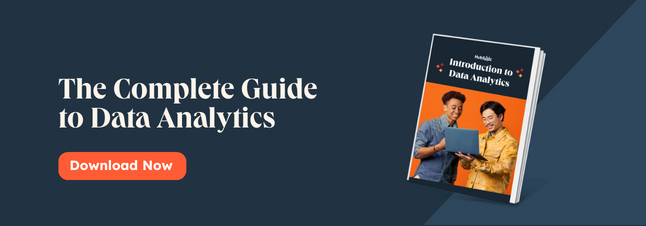If the customer's information has changed between any of these touchpoints, then the marketing or sales teams no longer have the best data to engage this customer in the future if they don’t have access to master data.
Let's expand our definition of master data.
What is master data?
Master data is the unique information that describes a business's core entities. It is often referred to as a golden record of information or the best source of truth. This also means that the master data concept aligns with the single source of truth approach to data management.
Master data is accurate, consistent, and uniform, removing the improper formatting roadblocks that impede data sharing in an organization. All information systems can expect to receive master data in the same format and structure.

What your business considers master data will differ depending on your business model. However, all data that is critical to your business's operations should be categorized as master data.
To better understand this qualification, let's contrast master data with other categories of business data:
- Transactional data: Data generated by business applications while supporting daily operations
- Analytical data: Data created through calculations and analysis of transactional data to provide higher-level insights
- Master data: Data on the business entities that systems reference to complete transactions. Analytical data is often used to provide a deeper view of master data objects.
You can see these data categories in action in this example: Customer A purchased 20 units of Product B on 01/01/2022 for a total of $500. Customer A and Product B are the master data. Without either of these entities, there would be no one to purchase the product or no product to purchase. In other words, no transaction to conduct. The transactional data is the quantity (20 units), the price ($500), and the date (01/01/2022).
There is no immediate analytical data in this scenario, but analytical data can be calculated from a larger data set defined by the master data. For example, you can look at Customer A's purchase history. Have they purchased this product before? If so, how many times? How does the amount spent in this transaction compare to their average for all purchases? How about the average purchase quantity and amount for Product B if there have been previous transactions?
These data points and the insights they provide can point to opportunities. If this is an unusually large purchase for Customer A, perhaps their organization is launching a new initiative that your company could provide other products and services to support.
This video from Cubeware reviews the definition of master data and how master data management creates this superior record for business-critical information:
Types of Master Data
Master data is not one ubiquitous data set. Instead, it breaks down into four types, which can also be referred to as data domains. These four data domains are:
1. Customers
Though it may look like it's only focused on customers, the customers domain actually tracks all of the individual people and entities that drive a business. This includes customers, employees, partners, and suppliers.
2. Products
The products type tracks the attributes associated with providing products and services, including products, bills of materials, equipment, and media.
3. Locations
The locations domain focuses on the physical locations where work is performed in an organization. This includes branches, facilities, franchises, and stores.
4. Others
The others domain is a catch-all for any business-critical data not captured under the other three domains. This includes data on accounts, contracts, warranties, financials, policies, and other assets specific to your industry.
Now that you understand master data and its types, let's examine some examples.
Master Data Examples
Customer data is a go-to example of master data, since every organization considers customer data to be master data. Who could be more critical to your business's operations than the people and businesses who purchase your offerings? Up-to-date customer data is essential to maintain business continuity and avoid missed opportunities.
If a customer updates their phone number in an online portal, this data should be disseminated beyond the website's data store so that the finance team can reach them if there's an issue with, say, processing a payment.

Another prime example of master data is product information. If the product's price is changed in the point of sale (POS) system but that information isn't updated on the website's product page, then customers will be provided with an incorrect cost estimate. Only when they go to checkout do they see the true price, at which point they may leave and find a competitor's site.
A master data strategy would ensure that changes to the product price are captured and shared to other systems to keep information synchronized. The practice of implementing master data in your organization is known as master data management. We’ll review this concept next.
What is master data management?
Master data management (MDM) is the practice of creating and maintaining master data in an organization. The goal of MDM is to provide a unified data service that shares accurate and consistent information across the business.
The process to implement MDM is rooted in both technology and culture. For example, if your organization has traditionally kept departments' operations and their associated data in different siloes, you will need to work with teams to establish new values around collaboration and information sharing. MDM is only truly effective when tools and stakeholders work together to maintain accurate data and get this information into the right hands.

Master data management relies on good data governance, policies, and standards to enforce data quality during intake and to maintain data integritydata managementdata management over time as records are updated. Without this dual focus on policy enforcement during ingestion and updates, master data will degrade over time, decreasing the value of insights and lowering the return on the investment of time and money to implement MDM.
This video from Informatica reviews master data management and its capabilities:
Why is master data important?
Master data is a key source of truth for organizations seeking to keep their critical data up to date. Companies turn to MDM to create, maintain, and share master data across the enterprise.
Many challenges may arise from the lack of MDM such as: data redundancy, data inconsistencies, business process inefficiencies, and rapid changes in the business model. It can be a painful process to update several systems when new information becomes available.
This is why having well-managed master data is important. You can gain long term benefits by centrally managing data throughout your organization. Master data concepts build a data-driven business culture where employees can make decisions knowing they have the latest and best data available.
Editor's note: This post was originally published in February 2022 and has been updated for comprehensiveness.











